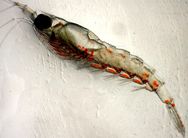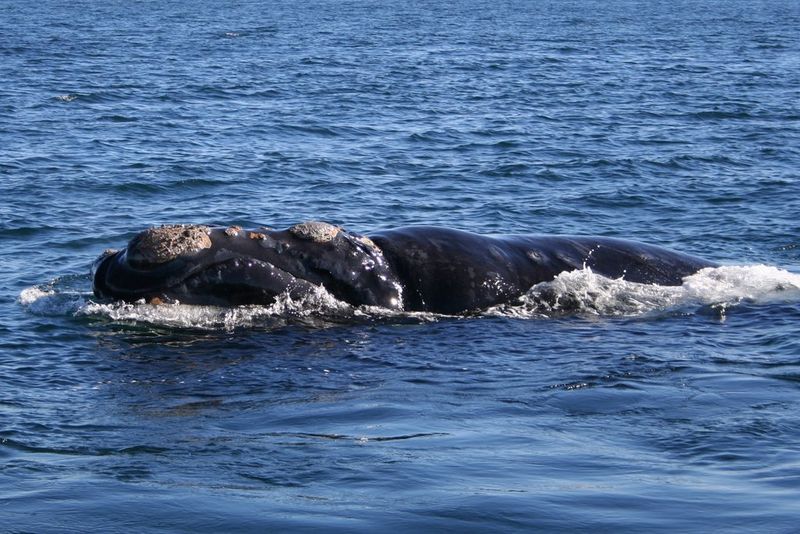.

© AP Photo/NOAA, Jaime Gomez GutierrezThis undated photo from NOAA Fisheries Service shows a species of Pacific krill. Millions of the inch-long shrimp-like animals have been washing up on beaches between Eureka, Calif., and Newport, Ore., and scientists don't exactly know why. Strong winds may have pushed them ashore while they were mating near the surface, or they may have run into an area of low oxygen
Grants Pass, Ore. - Millions of krill - a tiny shrimp-like animal that is a cornerstone of the ocean food web - have been washing up on beaches in Southern Oregon and Northern California for the past few weeks.
Scientists are not sure why
National Oceanic and Atmospheric Administration oceanographer Bill Peterson says they may have been blown into the surf by strong winds while mating near the surface, and then been dashed on the beach.
The species is
Thysanoessa spinifera. They are about an inch long and live in shallower water along the Continental Shelf. They have been seen in swaths 5 feet wide, stretching for miles on beaches from Eureka, Calif., to Newport, Ore. Some were still alive.
"There has definitely been something going on," Peterson said from Newport. "People have sent us specimens. In both cases, the females had just been fertilized. That suggests they were involved, maybe, in a mating swarm. But we've had a lot of onshore wind the last two weeks. If they were on the surface for some reason and the wind blows them toward the beach and they are trapped in the surf, that is the end of them."
Or, they may have fallen victim to low levels of oxygen in the water, said Joe Tyburczy, a scientist with California Sea Grant Extension in Eureka. A recent ocean survey showed lower than normal oxygen levels in some locations. If the krill went to the surface to get oxygen, they could have been blown on shore, he said.

